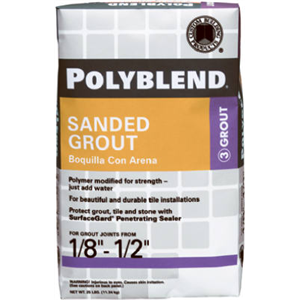Can I Use Thinset as Grout?
Q: Can I Use Thinset Mortar as Grout?
A: Let me answer your question with a question: Why would you want to? To save money, convenience, or what?
I see this question come up every now and then, and I think one motivation on the part of DIY’ers may when they are installing the tile, the thinset mortar squishes up between the seams of the tile. The DIY’er may think: the damn stuff is already between the tiles, so why not just keep it there as grout?
Thinset as “Accidental” Grout is Fine
Sure, you’re going to get some thinset “squish” between tiles. The more skilled you become as a tile, the less squish you will get. But squish is nothing to fear. Any thinset that forms this bulge between tiles is OK–in small portions. We’re not talking about the entire perimeter of the tiles; we’re talking the occasional squish here and there.
What you most certainly want to limit is thinset mortar squish that rises above the level of the tile. This will give you no end of trouble.
But How About Thinset Instead of Grout? It’s Cheaper…
Thinset is very cheap. At the time of this writing (2009), you can buy a 25 pound bag of dry thinset for about $13. And that’s just retail.
Your basic 25 pound bag of dry sanded grout will run you about twice that amount…around $22.
But there is a reason why tilers use two different materials for mortar and for grout: they had different compositions. You can even feel the difference if you rub the two materials between your fingers… Grout is grainy-er than thinset mortar Thinset’s job is to make the tile stick down; grout’s job is to provide this side-to-side stability.
Not only that, but thinset comes in one bland color. One grout manufacturer, Mapei, produces grout in what they call “36 designer colors.” And Mapei is a pretty front-lines, Home-Depot-type of grout manufacturer. If you want to get really creative, you can find grout in a wider range of brilliant colors, too.
